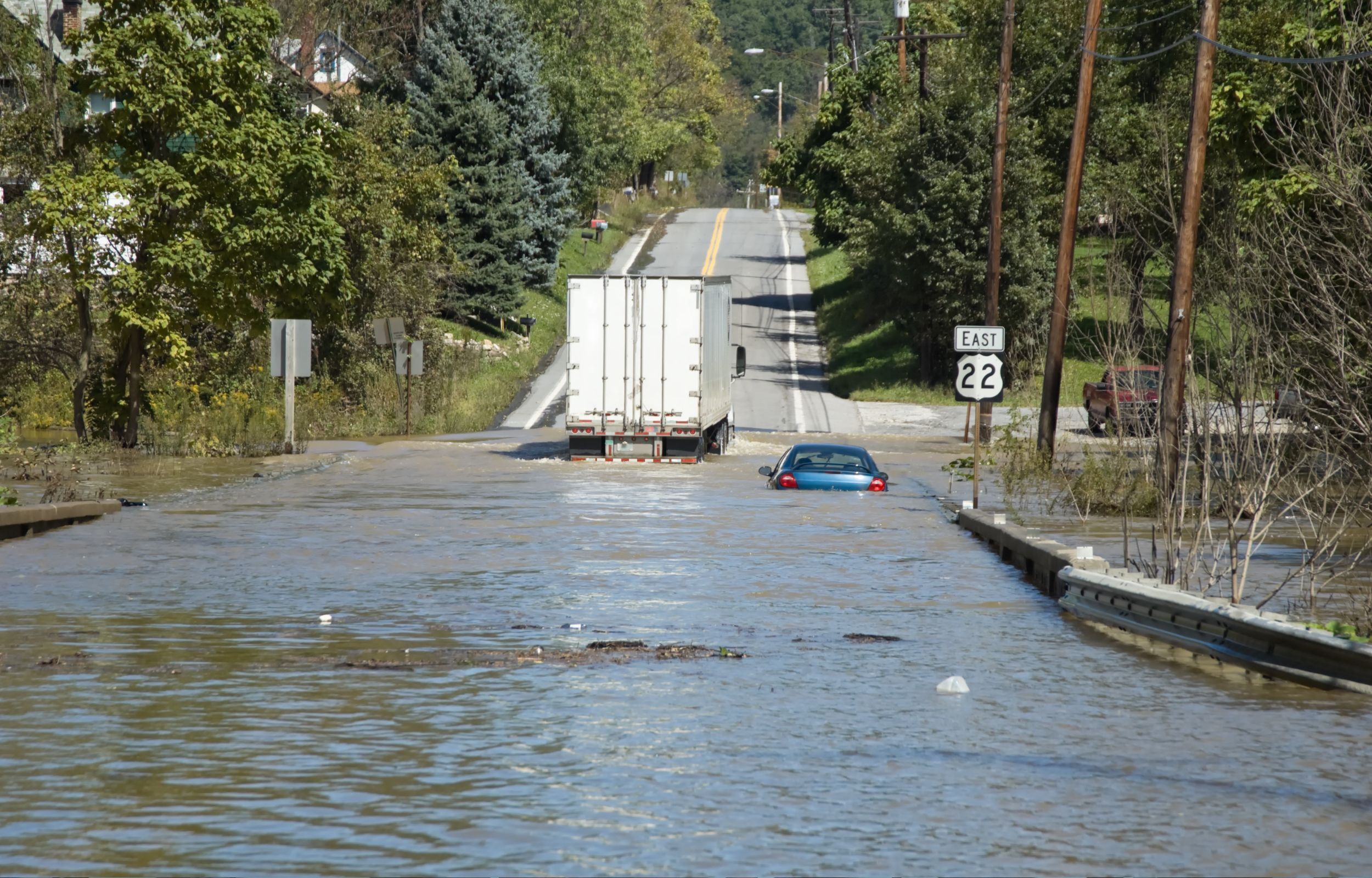Urban Flooding Safety Checklist

According to the National Weather Service, “tropical storms and hurricanes have affected every coastal state along the Atlantic and Gulf of Mexico from Texas to Maine,” even reaching some inland states. With rain reaching areas up to hundreds of miles away from the eye of the storm, it’s important for everyone to know how to stay safe in urban flood zones.
What is urban flooding?
Urban flooding occurs in more densely populated areas when excess water doesn’t have anywhere to escape due to drains systems becoming overwhelmed. In most cases, urban flooding can lead to flooded basements and sewer backups. In cities, where infrastructure might not be as strong and there are more people living in underground or “garden” apartments, urban flooding can lead to injury or drowning.
If you’re in a region, city, or a neighborhood that could be affected by intense storms and flooding, be sure to review these strategies for keeping you and your loved ones safe.
Stay Informed
The most important prevention measure when faced with a flood is to know when a storm’s coming. If possible, sign up for emergency alerts from your community or neighborhood groups. Monitor forecasts from government agencies like the National Weather Service, which will also provide flood alerts.
Any kind of advanced warning of a flood could provide you with up to a few days of preparation, keeping you and your little ones out of harm’s way.
Flood Proof Your Home
If your family’s home is prone to flooding, you can minimize damage by placing sandbags around doors, windows, or other gaps in the home. Install a water alarm and maintain a working sump pump to protect your basement. Install a battery-operated backup pump in case of power failure.You can also elevate your furniture and appliances to prevent water damage.
Unplug all electronics – especially those in the path of flood water — to reduce the potential risk of electrical shock or an electrical fire should water begin to rise in your home.
Make an Emergency Preparedness Kit
When an emergency strikes, there is little to no time for delay. Pack an emergency bag in advance to ensure your family is equipped with life-saving items. A good emergency bag includes:
- First aid kit (bandaids, alcohol wipes, antibiotic ointment, antiseptic wipes, instant cold compress, sterile gauze pads, cloth tape)
- Non-expired medications
- Water
- Flashlights
- Fresh batteries
- Blankets
- Food
Don’t forget to place the emergency bag in a location that is easy to access.
Create (and Practice) a Safety Plan
Having to evacuate your home due to a natural disaster is scary and challenging, but it may be necessary to ensure the safety of you and your family.
Create a safety plan for a flood scenario and practice it with your children throughout the year. When you take the guesswork out of emergency responses, you save precious minutes that can be spent removing yourself from a dangerous situation.
To make a good safety plan, remember to find safe exits and meet-up points.
Look around your home and locate the exits you can safely and quickly use to escape a flood. Remember, you’re probably not going to be able to leave through your basement!
Find a “safety point” and remind your children of its location. This can be a community building, a neighbour’s house, or a patch of higher ground where you can meet up that won’t be as affected by the flood waters. Remember, elevated ground is the safest option to avoid flood waters.
Never Walk or Drive Through Flood Water
Don’t confuse flood waters with rainwater. When flooding occurs, jumping in puddles is the last thing you want to do. Flood water has multiple hidden dangers in it and trying to walk or drive through it could put you at risk for poisoning, electrical shock, or drowning
Steer Clear of Contaminated Waters
When drains reach capacity during a flood, there’s a chance for garbage and sewage to rise up and join the runoff. This polluted mix can present serious health risks for adults, children, and pets, so it’s best to stay away from rising waters.
Avoiding Electrical Shock
Flood waters can also be a conductor of electrical charges – meaning that trudging through unknown waters could put you at risk of electrocution from wires you can’t even see. Avoid these dangers by only traveling where there’s a clear and unobstructed path.
The Dangers of Driving through Flood Water
Finally, though it may be tempting to just get your family in the car and drive away from the flood waters, it’s important to remember to “Turn Around, Don’t Drown.” According to the National Weather Service, the average car will have difficulty driving in six inches of water and can float away in as little as a foot of water. 58% of the 997 fatalities blamed on flooding from 2011 to 2020 happened in vehicles, according to the National Weather Service.
With extreme weather conditions becoming more common, it’s important for parents and caregivers to know how to safely navigate flood conditions. Prepare a safety plan, speak with your loved ones, and use best judgment. Urban flooding should not be taken lightly.
